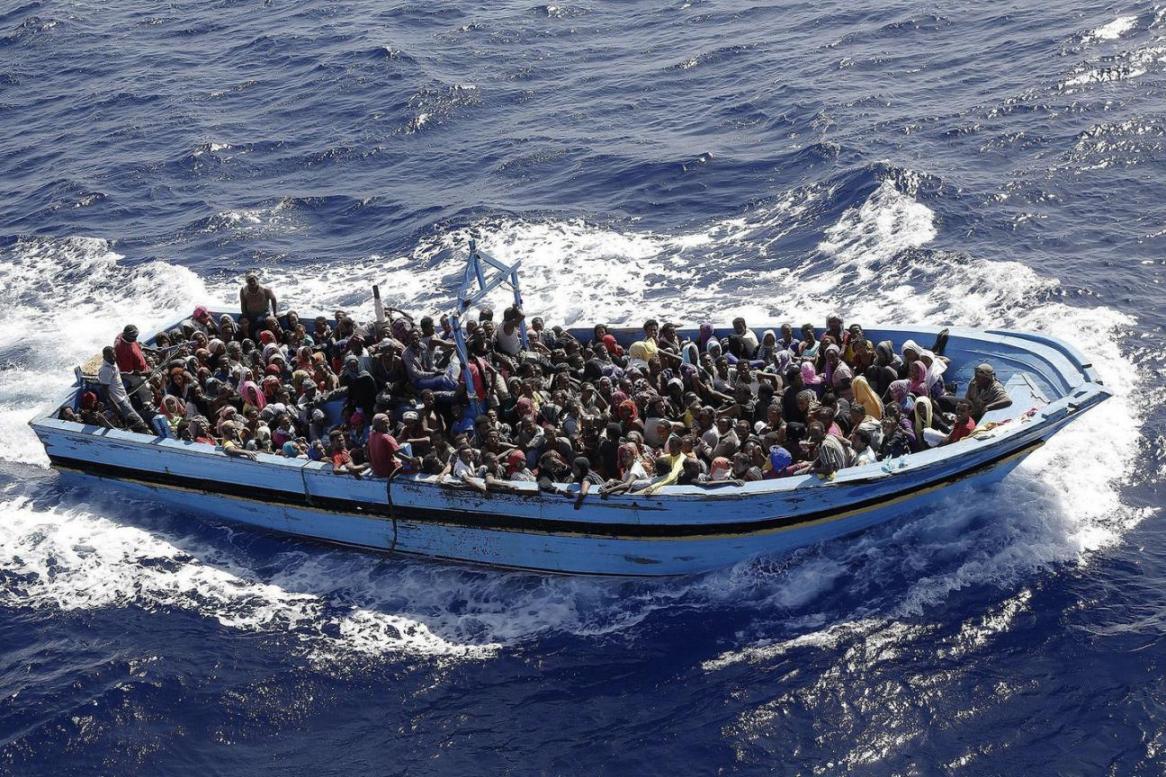Two cargo boats with a total of more than 1,200 migrants on board were abandoned and left to drift dangerously in the Mediterranean this week - a relatively new tactic by people smugglers. The Italian authorities did eventually manage to board both vessels - one a cargo ship, the other a cattle transport - and rescue the passengers. But many migrants who make the ruinously expensive and risky attempt to enter Europe illegally aren’t so lucky, and die in the attempt, Richard Hamilton, a BBC reporter and editor and the writer of the book ‘The Last Storytellers: Tales from the Heart of Morocco’ wrote.
Among Time Magazine’s top ten photographs of 2014 is an astonishing image. From a distance it looks like a fish, with colorful scales, with its gills and tail guiding it through the water. But look closely and you see that it is a boat - packed so tightly with people looking up that you cannot actually see the boat, only a collection of humans shaped like a boat. It is like when a child sprinkles a piece of cardboard with glitter - you cannot see the cardboard, just the glitter. The photo encapsulates the plight of more than 150,000 migrants - mostly from Africa - who tried to cross the Mediterranean in 2014 - up from 60,000 the year before. An estimated 3,000 of them died.
Personal Tragedies
Those are the statistics. But look even more closely at the picture and something else emerges. These are real people, not statistics. You can see men wearing football shirts from Argentina, Spain and Barcelona, and women clutching babies. Italy has wound down its own national rescue mission - Mare Nostrum. It has been replaced by a much cheaper European operation - called Triton, that is patrolling closer to the shores. But refugee groups say scaling down search and rescue is tantamount to letting migrants die. As Admiral Filippo Foffi of the Italian navy said, “If we are only in territorial waters, we won’t see people in danger and if they die we will not know it”.
Is Europe turning its back on the migrants? The Foreign Office in London has said it will not support search and rescue operations as they only encourage migrants, who set off in the expectation that they will be rescued. Many other European countries feel the same way. Championing the rights of refugees is difficult - at a time of economic hardship and high unemployment in many European countries, there is diminishing sympathy for foreigners. Critics also say the new EU mission - with its more limited scope - will only embolden the traffickers: as one MEP put it, “Triton scares no one”.
Shocking Image
There was another shocking photo that hit the newspapers in 2014. It shows two people playing golf amid a paradise of palm trees, luminous fairways and gently undulating greens. But if you look at the top of the picture you see something deeply disturbing. About a dozen other people are scaling a 6m-high wire fence. They are African migrants trying to get into the Spanish enclave of Melilla in Morocco. The contrast between their desperate lives and the luxury golf course is painful. Even looking at the picture makes me feel guilty. I was a correspondent in Morocco and used to report on the efforts of sub-Saharan refugees to enter Ceuta and Melilla. I also played golf. Europe is caught in a terrible ethical dilemma. It does not want to encourage migrants, but it doesn’t want to let them die either. European governments, it seems, are damned if they intervene, and damned if they don’t.
But the asylum seekers also face a dilemma. They are damned to the dangers of the sea, or damned to a life of poverty or persecution at home. Desperate people will always take desperate measures. As William Spindler of the UN refugee agency UNHCR says, “If they can’t come through the door, they will try to come through the window.”


